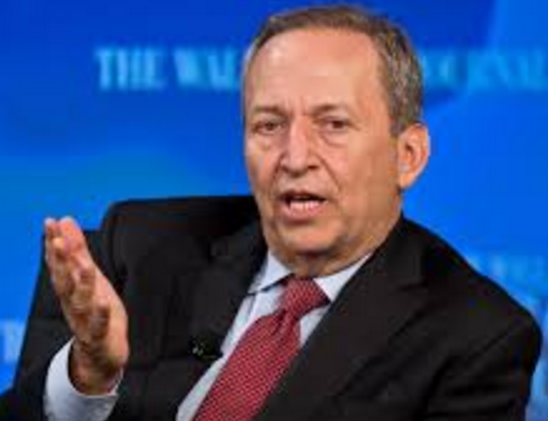Not quite there yet, but getting very close. Let’s take a look at his new Financial Times piece:
Many of my friends have recently issued a statement asserting that the Fed should change its inflation target. I suspect, for reasons I will write about in the next few days, that moving away from inflation targeting to something like nominal gross domestic product level targeting would be a better idea. But I believe this issue is logically subsequent to the question of how policy should be made in the near term with the given 2 per cent inflation target.
Favoring NGDP targeting doesn’t make you a market monetarist, but it’s a good start. You also need to believe that market forecasts are better guides to policy than the Fed’s own internal model:
The Fed is not credible with the markets at this point. Its dots plots predict four rate increases over the next 18 months compared with the markets’ expectation of less than two. Table 1 shows the Fed has been highly unrealistic in its forecasts for several years now
OK, market forecasts of interest rates are nice, but MMs view interest rates as an unreliable indicator of policy. We want market forecasts of macroeconomic aggregates.
Summers continues:
The truth is that markets do not share the Fed’s view that inflation acceleration is a major risk. Indeed, they do not believe the Fed will attain its 2 percent inflation target for a long time to come. Table 2 shows than neither inflation indexed bonds nor the swap market expect the Fed to hit its 2 per cent personal consumption expenditure (PCE) inflation goal in the foreseeable future.
So Larry Summers shares our preference for relying on the judgment of markets rather than bureaucrats.
To be sure, Summers falls a bit short of being a true, card-carrying market monetarist. Here he confuses positive analysis with normative analysis:
Second, the Fed regularly proclaims that it has a symmetric commitment to its 2 per cent inflation target. Recoveries do not last forever and when recession comes inflation declines. . . . Accordingly, policy should be set with a view to achieving modestly above-target inflation, perhaps 2.3 or even 2.5 per cent, during a boom with the expectation that it will decline during the next recession. A higher inflation target would entail easier policy than is now envisioned.
I hope you see the problem here. Summers is right that inflation usually declines during recessions. That’s a positive statement. But he also favors NGDP targeting, which implies that monetary policy should be conducted in such a way as to produce above average inflation during recessions and below average inflation during booms. Indeed, I’m quite confident that during the next recession Summers will be calling for above 2% inflation, on standard NGDP targeting grounds.
So Larry Summers has not quite gotten beyond the hawk/dove trap. He’s still a dove. True enlightenment occurs when one realizes that policymakers should be neither hawks nor doves, but rather should follow a rules-based approach.
Still, I’m very pleased to see NGDP targeting, as well as the idea of using market signals to guide policy, making continued inroads. When I started this crusade in the 1980s, there were only a tiny number of fellow travelers.
HT: Julius Probst


READER COMMENTS
Andrew_FL
Jun 15 2017 at 11:33am
People in “money is literally never loose” houses shouldn’t throw “perma dove” stones.
Thaomas
Jun 15 2017 at 11:57am
What could be more rule-based than NGDP targeting or Price Level targeting? Doesn’t even a full bore Market Monetarist still have to decide how hard to pull on which lever when NGDP or the price level is above or below target?
Scott Sumner
Jun 15 2017 at 4:14pm
Andrew, I agree.
Thaomas, Ideally, you’d let the market decide those questions.
Lorenzo from Oz
Jun 17 2017 at 2:15am
Well done, and excellent reason to keep plugging away.
Alexander Hamilton
Jun 17 2017 at 7:38am
Unrelated again but why thoughts on this?
https://gregkaplan.uchicago.edu/sites/gregkaplan.uchicago.edu/files/uploads/guvenen_kaplan_song_weidner_nberwp_2017.pdf
Comments are closed.